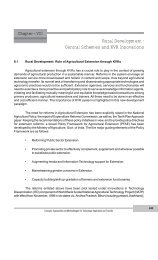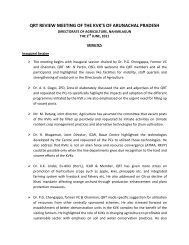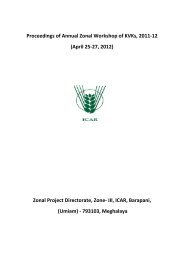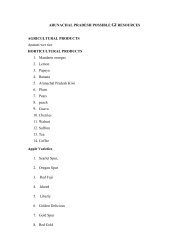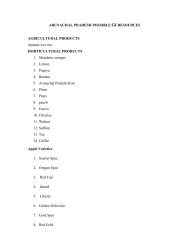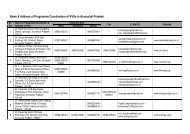Training Methodology for KVK Scientists - ICAR, Zonal Project ...
Training Methodology for KVK Scientists - ICAR, Zonal Project ...
Training Methodology for KVK Scientists - ICAR, Zonal Project ...
Create successful ePaper yourself
Turn your PDF publications into a flip-book with our unique Google optimized e-Paper software.
V<br />
V. Venkatasubramanian, Sajeev, M.V. & A.K. Singha.<br />
3. The trainer can very well decide upon the knowledge and skill components to be<br />
imparted to the trainees<br />
4. Helps the overall management of the training programmes.<br />
5. Helps monitoring and evaluation of the training programme.<br />
In general the training objectives can be classified into specific and general based upon<br />
their intensity of reference. The general objectives refer to the overall impact of a training programme.<br />
The specific objectives give the details of different components of a training programme. The training<br />
objectives deal with the changes in knowledge, skill/practice and attitude of the trainee that needs to<br />
be achieved through the programme. While <strong>for</strong>mulating the training objectives care must be taken to<br />
ensure that the objectives are <strong>for</strong>mulated based on the needs identified. Similarly, the objectives<br />
should also be well defined in-terms of condition, per<strong>for</strong>mance and standards with a specific reference<br />
to the type of behavioural changes attempted. The stated objectives should be well defined, simple<br />
and stated with clarity. It should be realistic, attainable and measurable through suitable evaluation.<br />
5.12 Translating <strong>Training</strong> Needs into Objectives<br />
A systematic procedure is to be adopted to <strong>for</strong>mulate the objectives based on the needs<br />
identified. A general outline of the steps involved is given below:<br />
1. List out all the training needs.<br />
2. Group them according to their category such as knowledge, skill and attitude part.<br />
3. Select those needs which can be met by the present training programme.<br />
4. Analyse them <strong>for</strong> their suitability and screen them based on the institutional objectives,<br />
interest of the people and feasibility of achieving them.<br />
5. Translate the selected needs into the training objectives.<br />
6. Clarifying the objectives is to be done be<strong>for</strong>e finalizing the training objectives. The<br />
clarification is done based on the analysis of job requirements, trainees’ capabilities,<br />
available resources and time.<br />
112<br />
Concepts, Approaches and Methodologies <strong>for</strong> Technology Application and Transfer



